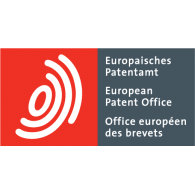For the first time, the European Patent Office has published guidelines on the patentability of artificial intelligence (AI) and machine learning (ML) technologies. The guidelines (G-II 3.3.1) came into force on 1 November 2018.
As the guidelines provide, AI and ML are “based on computational models and algorithms for classification, clustering, regression and dimensionality reduction, such as neural networks, genetic algorithms, support vector machines, k-means, kernel regression and discriminant analysis.”
 As these models and algorithms “are per se of an abstract mathematical nature, irrespective of whether they can be ‘trained’ based on training data”, the guidance concerning mathematical methods (G-II 3.3) – which are generally excluded from patentability, applies.
As these models and algorithms “are per se of an abstract mathematical nature, irrespective of whether they can be ‘trained’ based on training data”, the guidance concerning mathematical methods (G-II 3.3) – which are generally excluded from patentability, applies.
However, “If a claim is directed either to a method involving the use of technical means (e.g. a computer) or to a device, its subject-matter has a technical character as a whole and is thus not excluded from patentability under Art. 52(2) and (3).”
The new guidelines give two examples of technical application of AI and ML: “For example, the use of a neural network in a heart-monitoring apparatus for the purpose of identifying irregular heartbeats makes a technical contribution. The classification of digital images, videos, audio or speech signals based on low-level features (e.g. edges or pixel attributes for images) are further typical technical applications of classification algorithms.”
Conversely, “Classifying text documents solely in respect of their textual content is (…) not regarded to be per se a technical purpose but a linguistic one (T 1358/09). Classifying abstract data records or even “telecommunication network data records” without any indication of a technical use being made of the resulting classification is also not per se a technical purpose, even if the classification algorithm may be considered to have valuable mathematical properties such as robustness (T 1784/06).
The EPO warns: “When examining whether the claimed subject-matter has a technical character as a whole (Art. 52(1), (2) and (3)), expressions such as ‘support vector machine’, ‘reasoning engine’ or ‘neural network’ are looked at carefully, because they usually refer to abstract models devoid of technical character.”
________________________
To make sure you do not miss out on regular updates from the Kluwer Patent Blog, please subscribe here.


